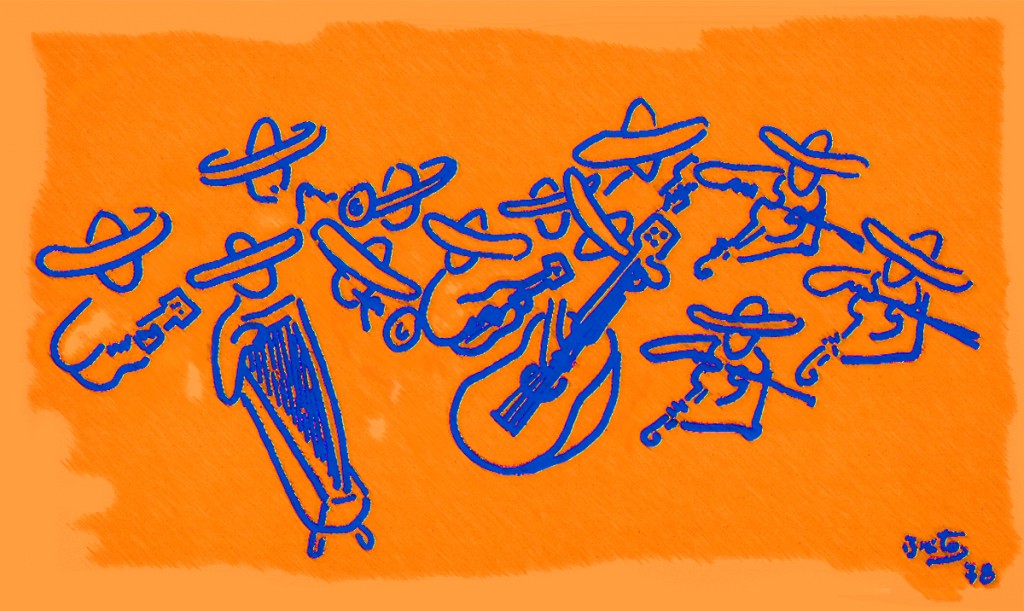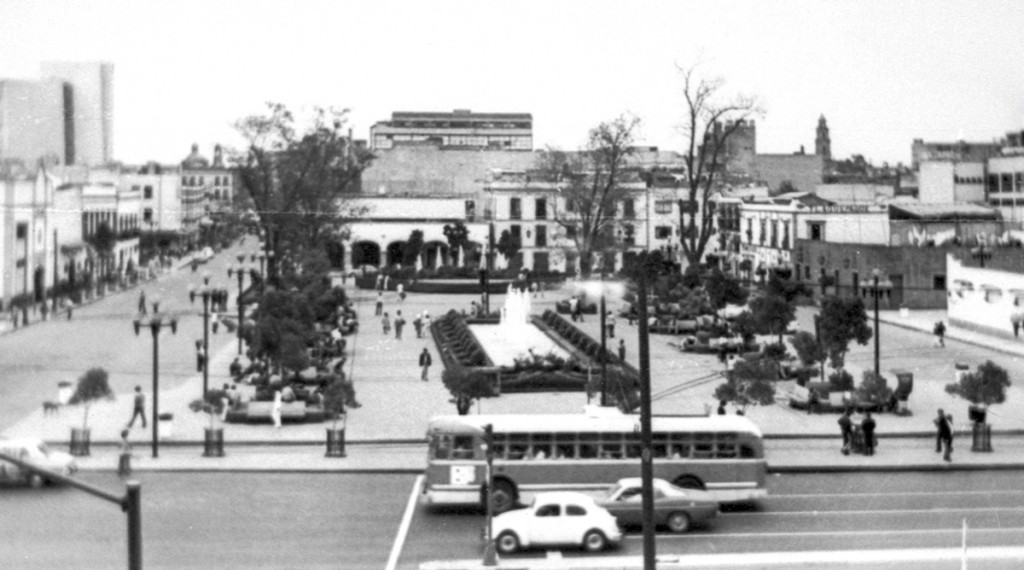Since ancient times, motherhood has been honored through a variety of customs and practices. The Mother’s Day tradition we know today, however, is barely a century old. The United States began celebrating its Mother’s Day in 1908, and Mexico only began celebrating its Día de las Madres in 1922. U.S. Mother’s Day is always the second Sunday of May, while in Mexico, it’s always the 10th of May, so the two holidays often fall on different days of the week. This year, both occur on Sunday, May 10.
For mariachis everywhere, Mother’s Day and December 12, Virgin of Guadalupe Day, are the two most important workdays of the year, and it’s no coincidence these two holidays are dedicated to mothers. While most of us love our two parents equally, few would dispute that our mother is the most tender and nurturing, the one we bond to the most in childhood, and the one whose special day we tend to celebrate the most.
Excepting Valentine’s Day, there is traditionally little demand for mariachi groups from January through April. Whereas mariachi musicians in the U.S. tend to have other employment or “day gigs,” most of those in Mexico derive their sole income from playing. For these musicians in particular, Mother’s Day work falls like manna from heaven, often allowing them to earn as much in a couple of days as they would during an entire slow month. It also represents the beginning of the busy season, since good weather means lots of outdoor parties and other events where mariachis are popular. This peak season usually lasts until the September 16 Independence Day festivities, which are traditionally followed by two more slow months until things pick up again in December.
Mother’s Day is celebrated around the world, with customs varying from location to location. Mariachi serenades on that day have long been popular in Mexico and the U.S. Hispanic community. My own most memorable Día de las Madres experiences date from Mexico City’s Plaza Garibaldi of the 1970s and ‘80s, during the period I lived and worked there. Plaza Garibaldi is where the urban mariachi tradition was born, and it remains the world’s center of mariachi activity.
My first Mother’s Day in Garibaldi was in 1977. The bustle started on May 9, the day before the actual holiday. By that evening, mariachi groups, dressed in every color and style of traje de charro imaginable, packed the plaza. The banca de los desesperados — a tree bordered by cement benches where freelance musicians congregated — was surrounded by hordes of strangers dressed in black charro suits and holding their musical instruments in their hands so prospective groups that were short a specific instrument would know which one they played. Many of these maromeros were older mariachi musicians who came out of retirement only on certain days of the year; others were simply soldiers of fortune, some of whom had traveled long distances to cash in on the momentary abundance of work. Entire groups showed up that no one in the plaza had ever seen before. These came from little towns, rented one hotel room for the entire group, undercut all competition, and worked day and night until the two-day bonanza was over.
Normally, a mariachi plaza like Garibaldi has a musician’s union that protects its members from opportunists by not allowing outsiders to work within that square’s perimeter, or by charging them a substantial cuota de paso for the privilege of doing so. When I arrived in 1977, however, there were four different mariachi unions, each claiming to be the authentic one, so the plaza was in a state of anarchy. Consequently, any group or individual that wanted to work there could and did, with few impediments.
The Mother’s Day serenades started the evening of the 9th and continued on through the night. Groups that didn’t have previously-contracted engagements needed only to stand out in the plaza for a few minutes to be hired by one of the hundreds of clients who came to Garibaldi seeking a mariachi group to take to their home, or who brought their mothers along and requested songs outdoors in the plaza. A typical mariachi serenata consists of eight songs, and lasts a little over half an hour.
By midday of the 10th, after a brief siesta, Garibaldi was once again teeming with musicians. Some claim to have counted over 50 ensembles present at the same time. Customers quickly snapped these up, and, at peak moments, the plaza became virtually empty of mariachis. As soon as a group returned from a gig, they would be besieged by customers desperate to hire them. The supply simply couldn’t keep up with the demand.
The succession of serenatas at different homes continued through the night, bringing tears of joy to every mother who was fortunate enough to receive one. The group I was playing with finally finished at daybreak on the 11th. When we got back to Garibaldi — bleary-eyed, hoarse-voiced, and sore-fingered or sore-lipped — there was hardly a mariachi in sight. In the first rays of dawn, barrenderos were busily sweeping up refuse from the previous night’s fiesta with old-fashioned escobas that looked like medieval witches’ brooms. After divvying up the money we’d earned over the two previous days, the group leader announced we were taking a few days off to rest and recover. When he handed me my share of the money, my eyes almost popped out!
I haven’t played in Garibaldi for years, but musicians who currently work in that plaza assure me that Mother’s Day there is not nearly as spectacular today as it was back in the era I describe. Downtown Garibaldi used to be the only mariachi plaza in the Valley of Mexico (one of the most populated metropolitan areas in the world), but today there are over a dozen smaller such plazas and places throughout the valley where people can hire a mariachi without leaving their own neighborhood. More recently, mini-mariachis that offer their services over the Internet at cut-rate prices have significantly reduced the demand for mariachis in plazas like Garibaldi.
While customs change over time, mariachis and Mother’s Day serenades aren’t in danger of going away anytime soon. If you live near San Antonio, you have a special treat in store for you this Mother’s Day weekend. Serenata para las Madres presents the cream of Texas mariachis accompanying the finest vocalists from the Mariachi Vargas Extravaganza in a unique homage to this time-honored Mother’s Day tradition. Take your mother, and your grandmother, too!
—Jonathan Clark
Serenata para las Madres happens Saturday, May 9, at 7:30 p.m., at the Charline McCombs Empire Theatre, located at 226 N. St. Mary’s Street in San Antonio. Tickets are available at ticketmaster.com.
What are your own Mother’s Day mariachi memories? Share them with our readers in the Comments section below.









